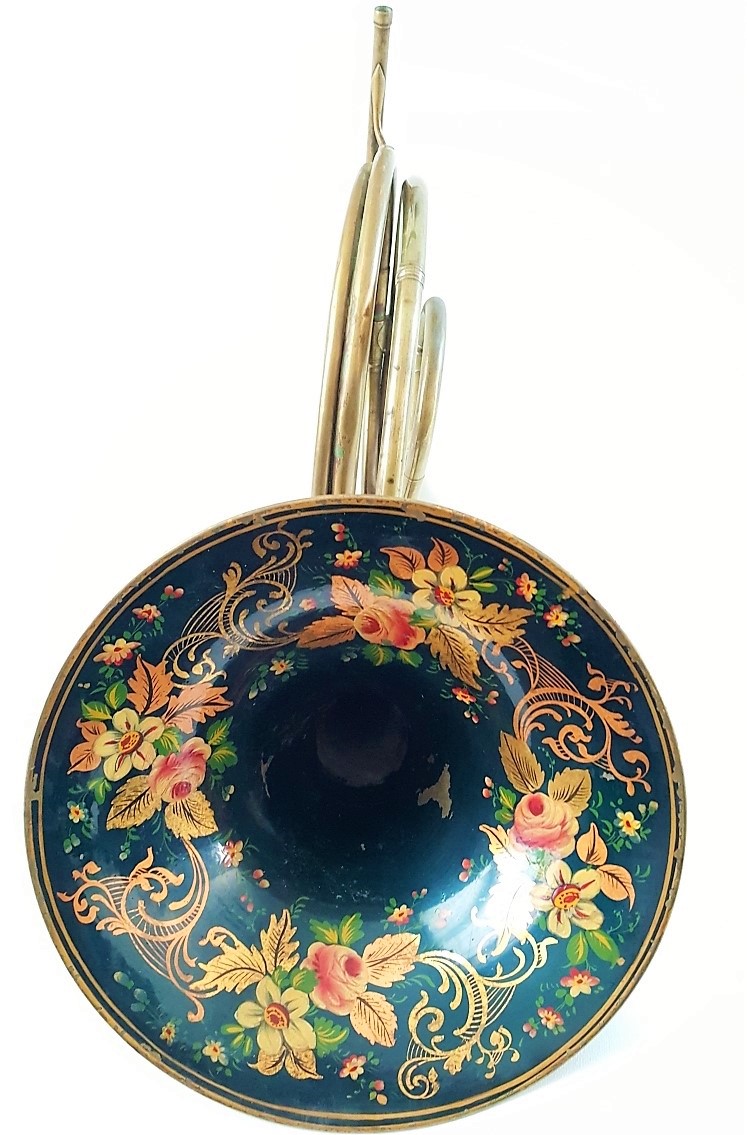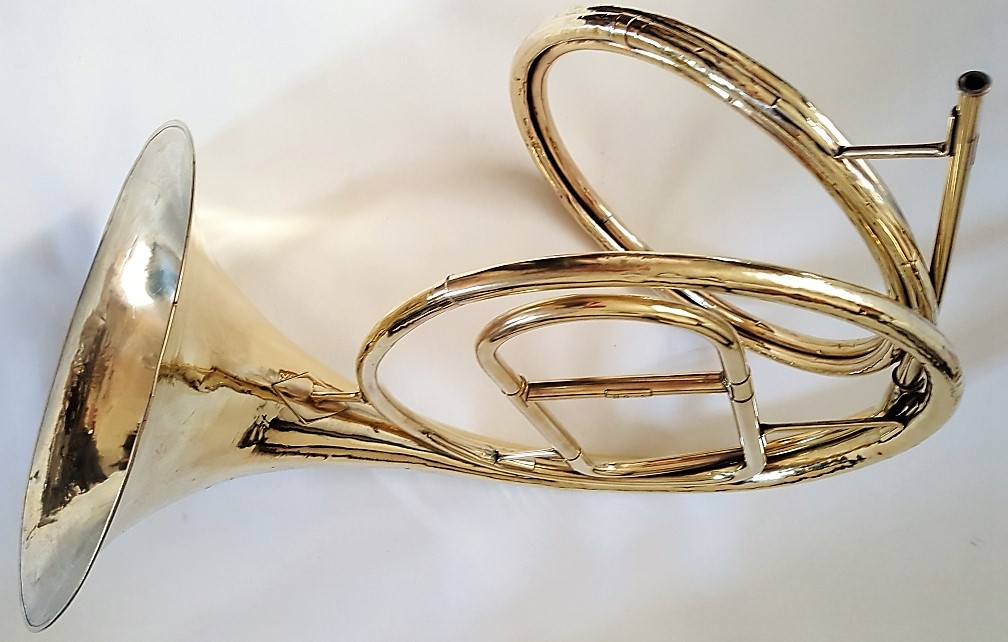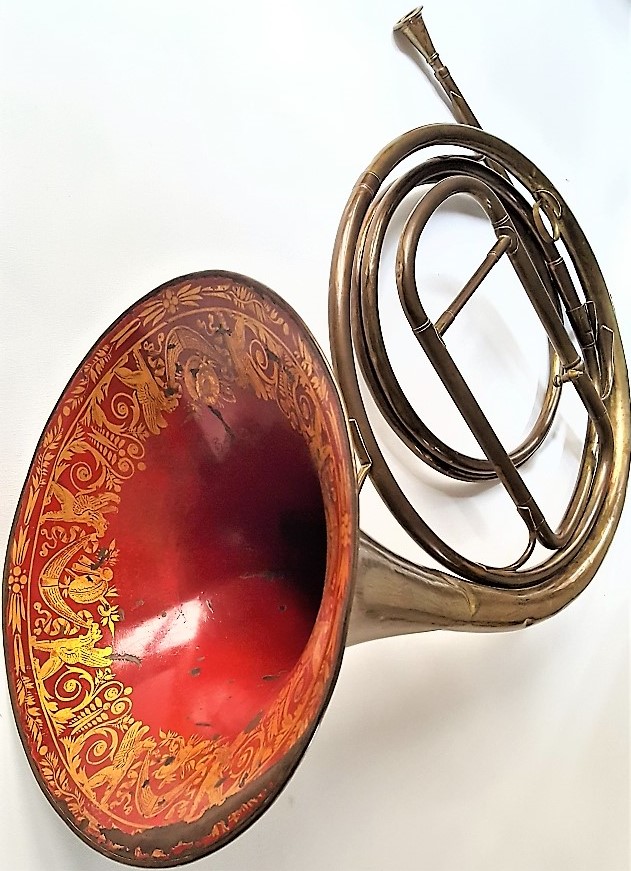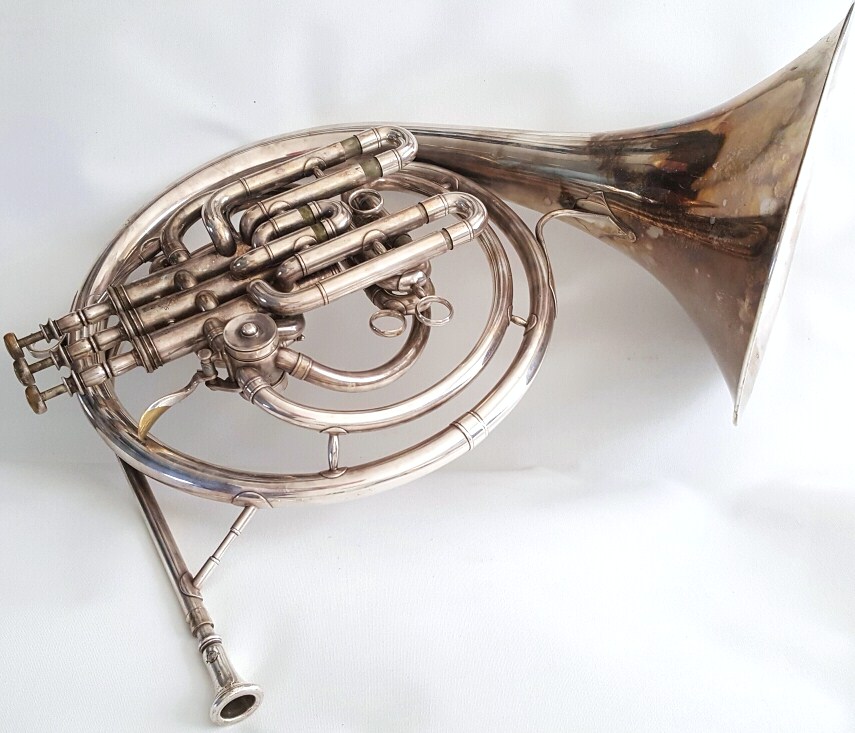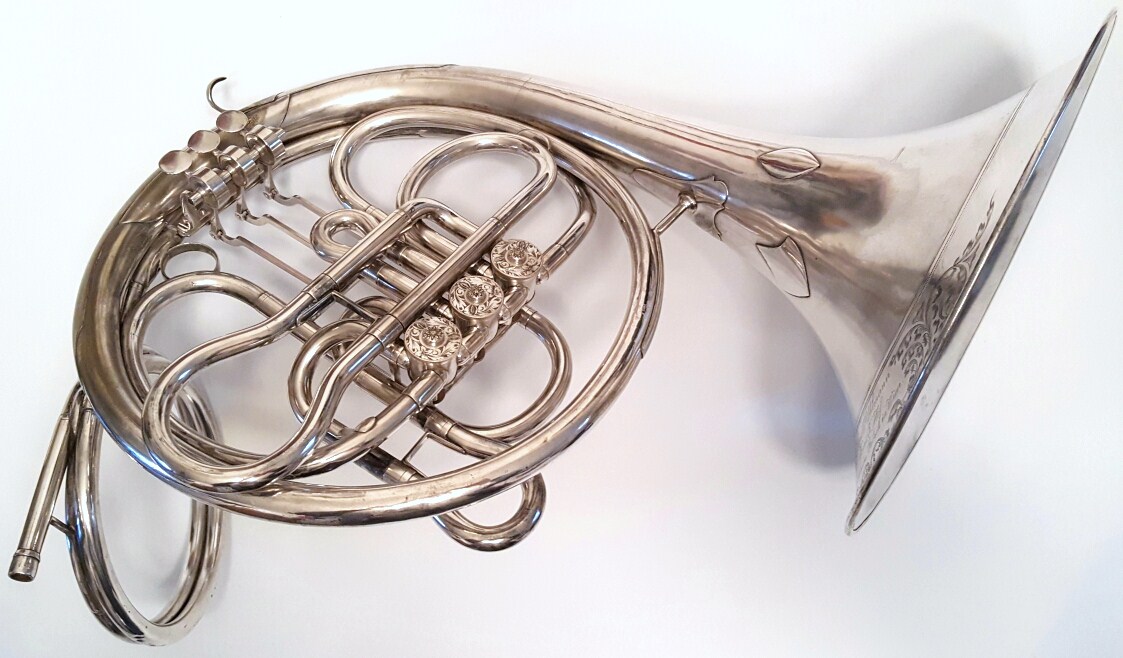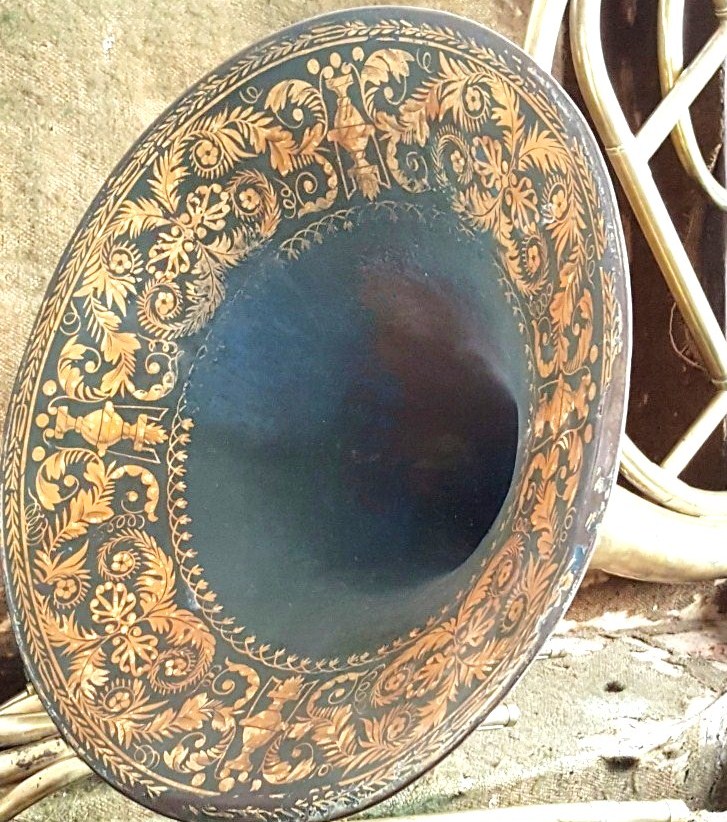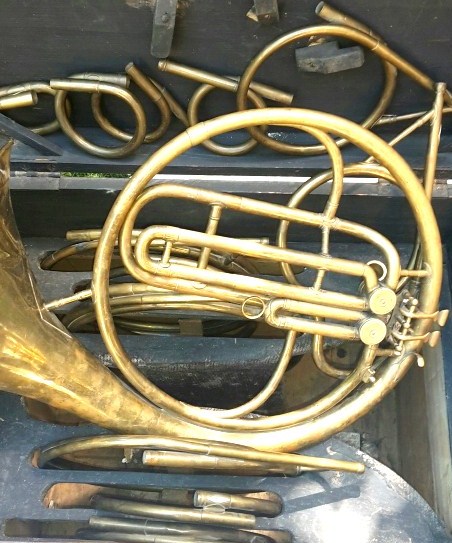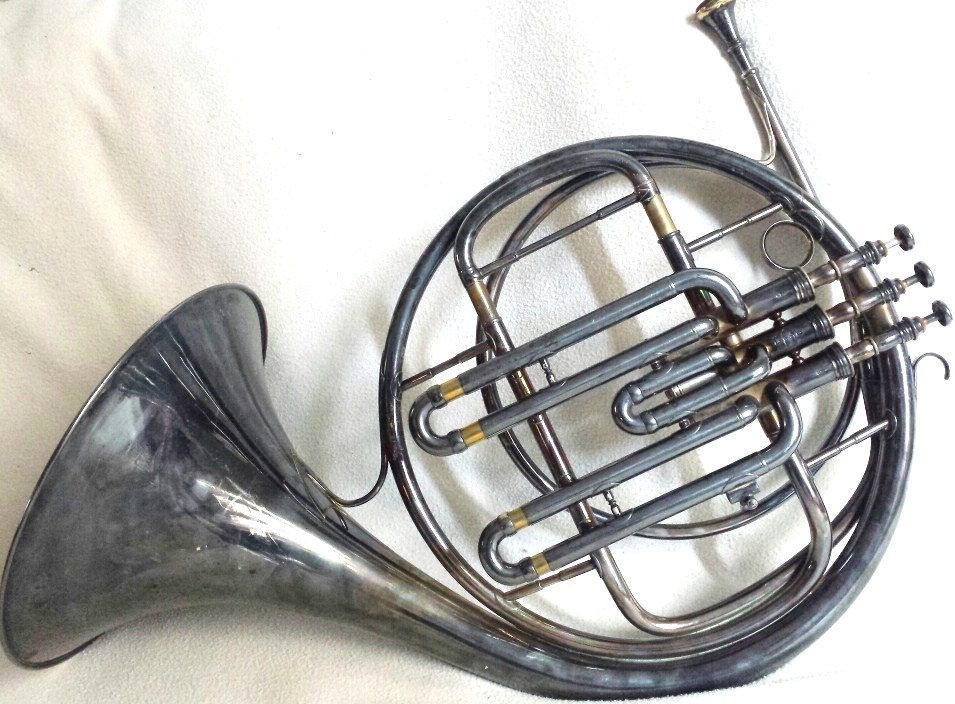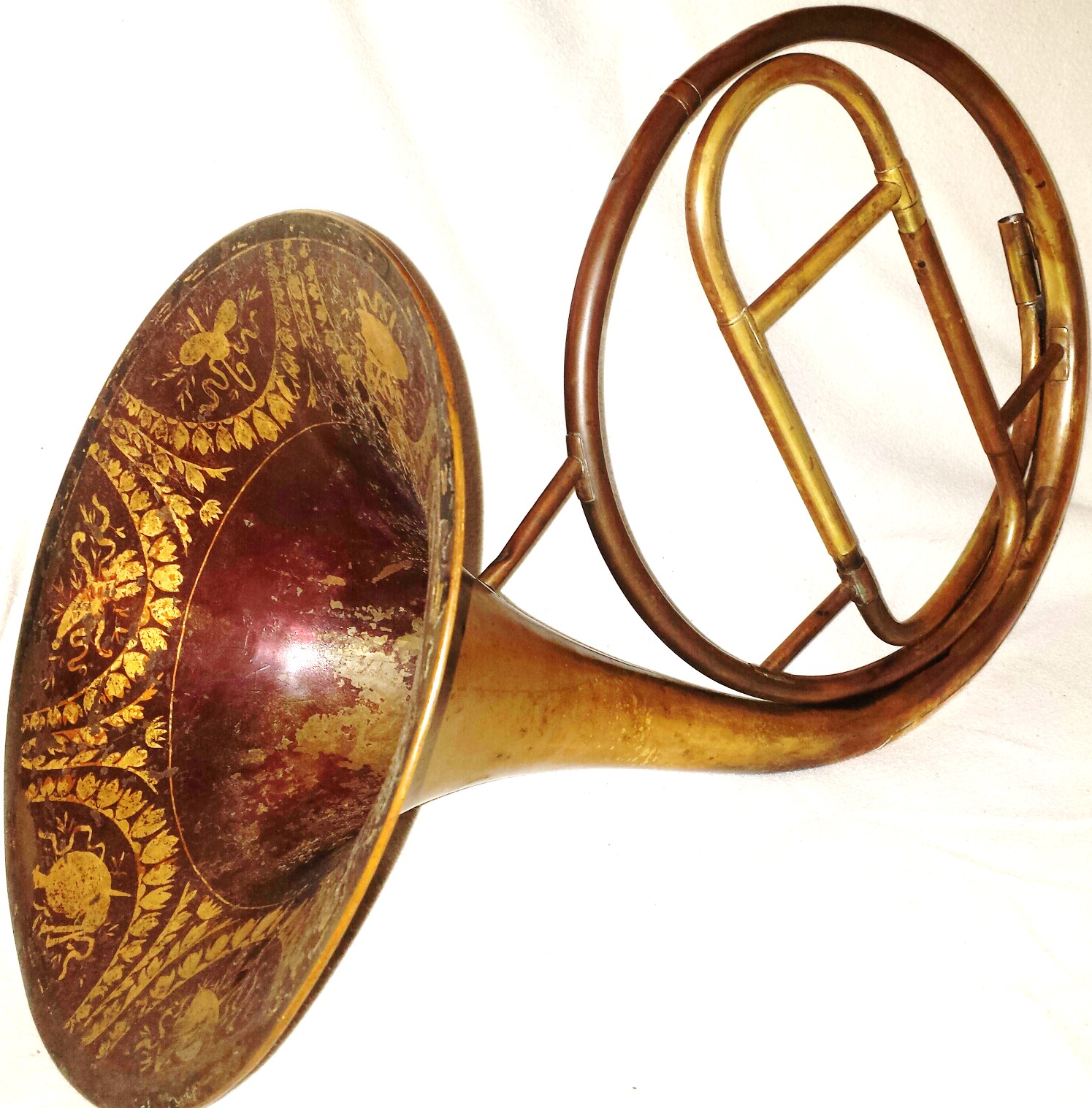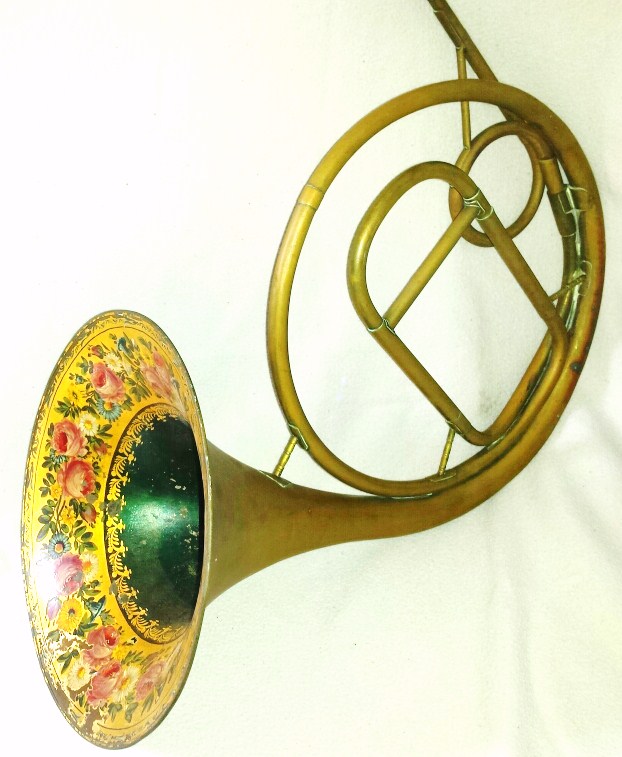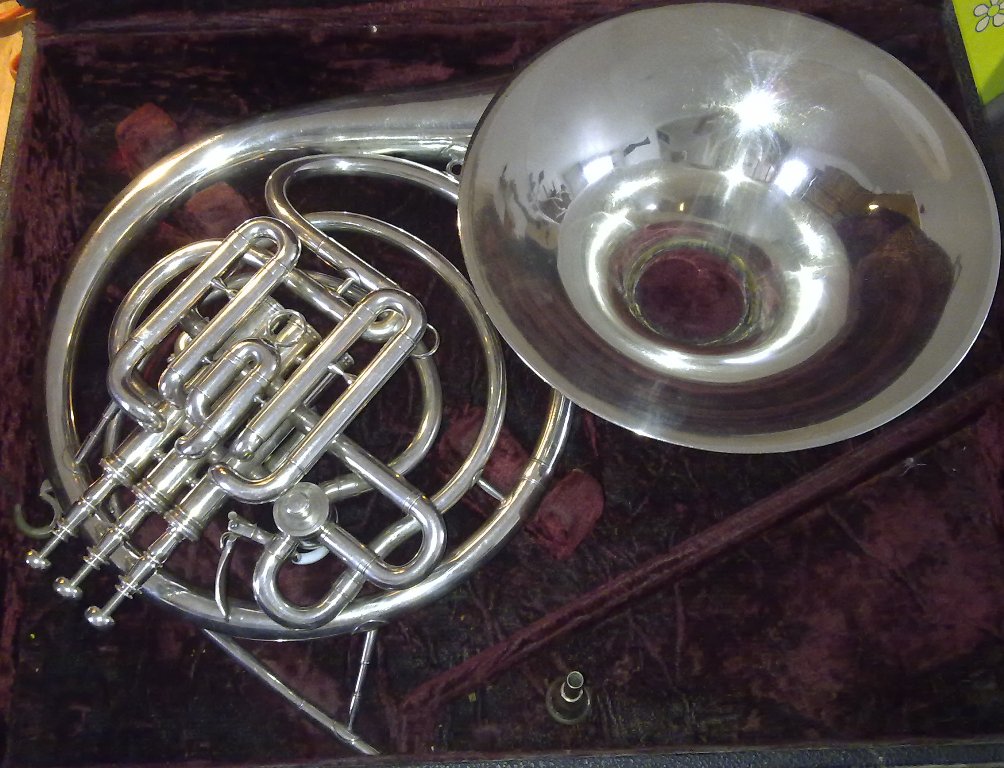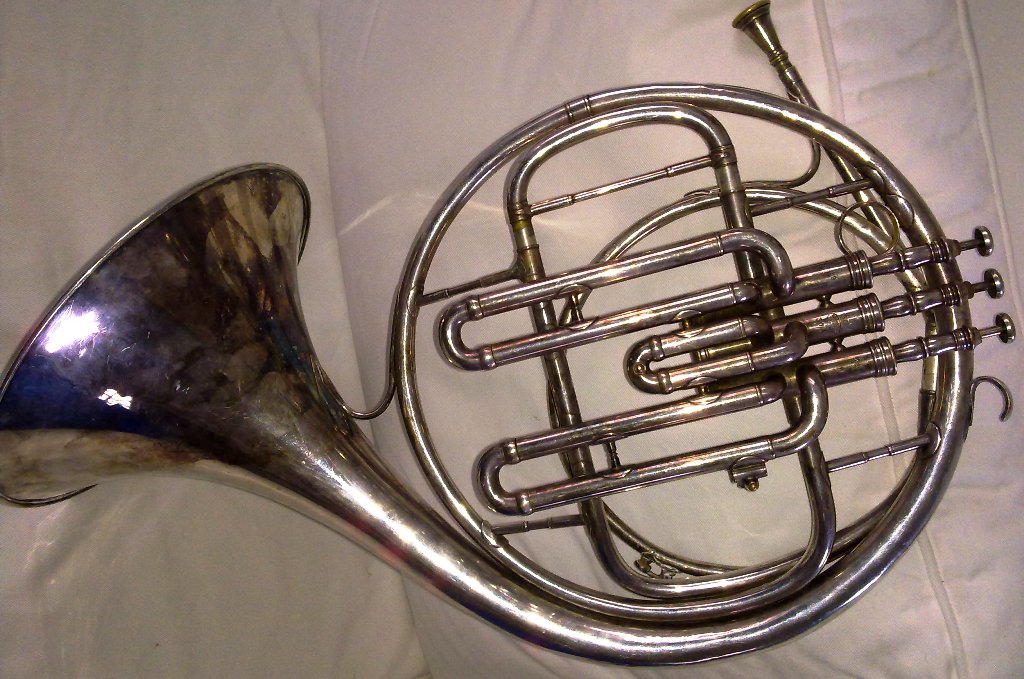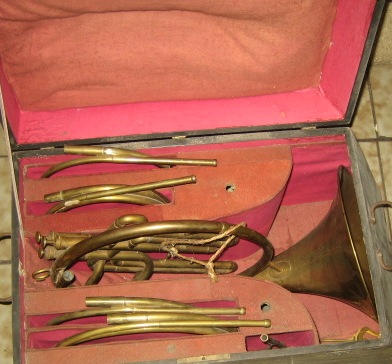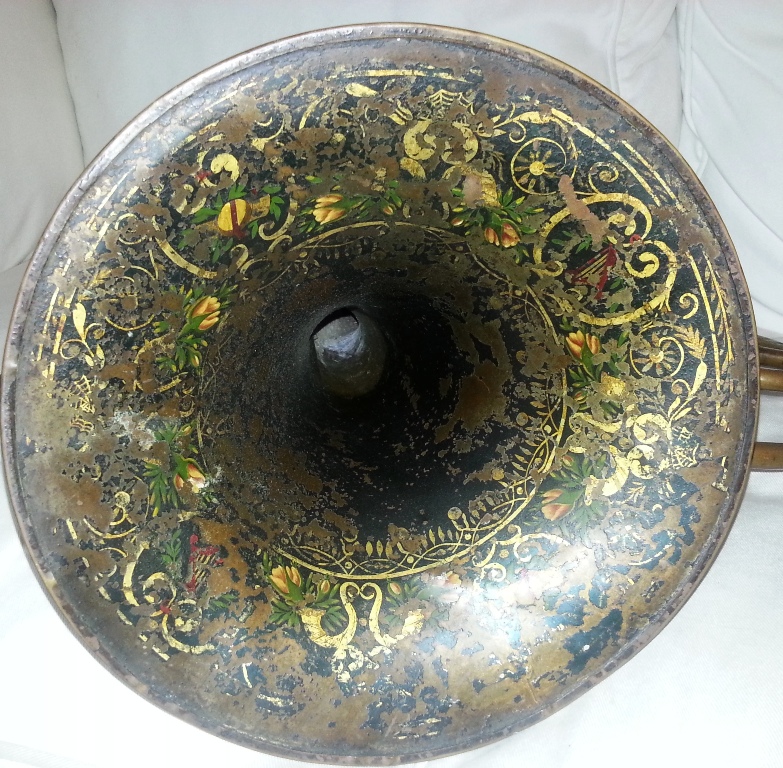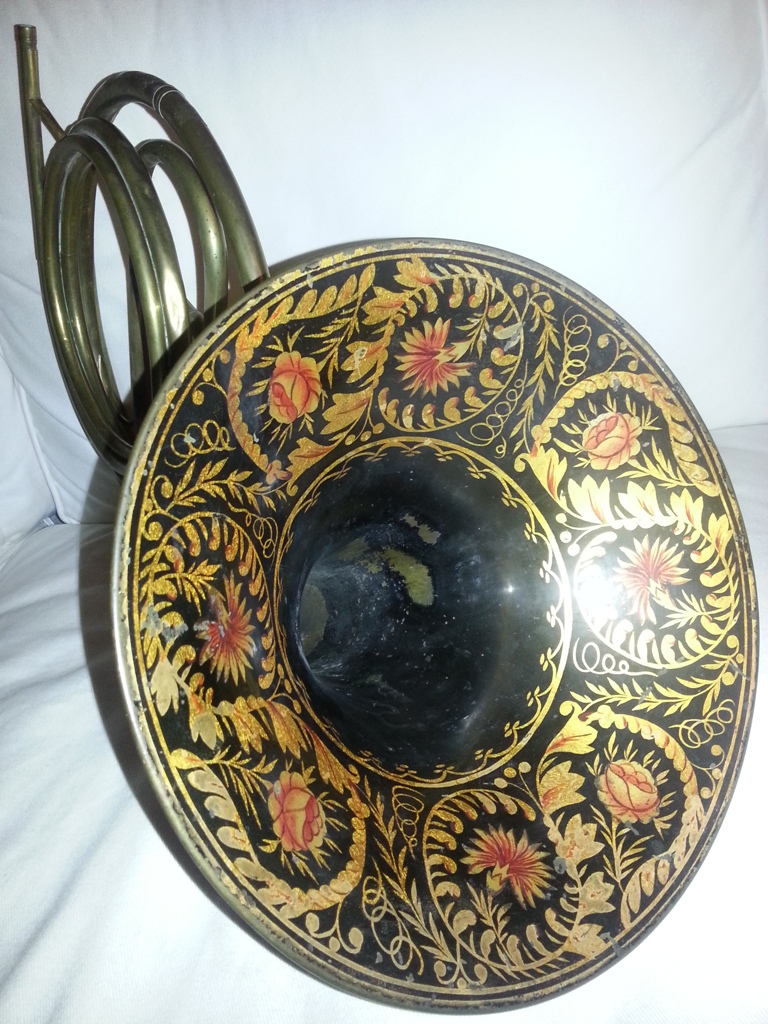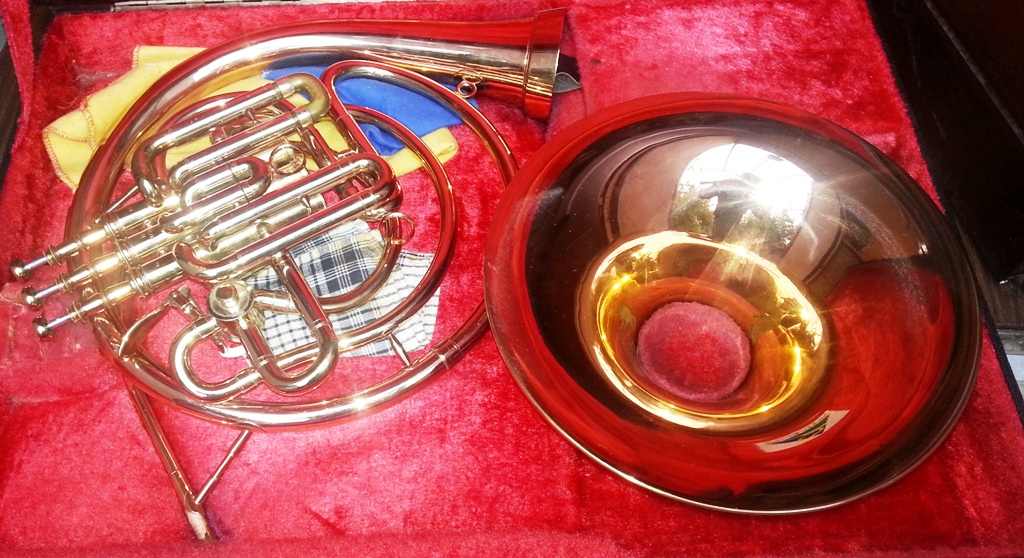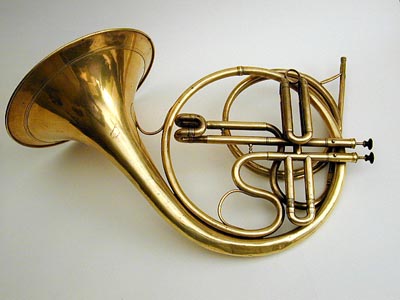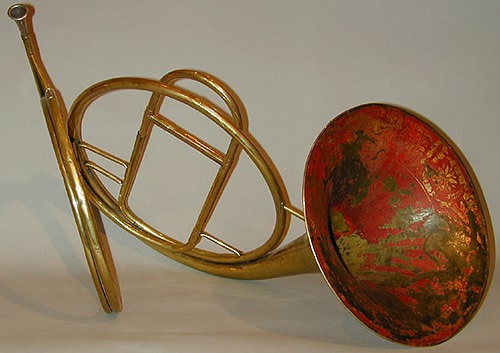Old Musical Instruments
Buying-Selling Early Musical Instruments
William Petit wpetit@sfr.fr Tel 00 33 6 13 12 43 22
Appraisal
Saxophones Selmer
Saxophones Adolphe Sax
Flûtes
Woodwind
Brasswind
Mandolins
Strings
Violin-Viola d'Amore-Quinton
Miscellaneous
French Natural Horns and Stoelzel Valves, Solo Horn,
Raoux, Courtois, Halary, Tabard, Piatet, Labbaye, Gambaro, Cretien, Selmer, Guichard, Selmer, Millereau, Uhlmann,
Dubois et Couturier, Charles Kretzschmann.
The Natural Horn was originally just used for as a special addition to the orchestra, but during the early 1700s composers began to include horn parts in most pieces, and the Horn became a part of the standard orchestra.
The main difference between the Natural Horn and the modern Horn was lack of valves ones.
However, the Natural Horn could only be played in one key, and to avoid having to switch instruments in the middle of a concert, players began using crooks, which were pieces of tubing that the hornist would attatch to the lead pipe, changing the length and modifying the key.
It is ideal to play Mozart, Frédéric Chopin, Franz Liszt, Robert Schumann, Félix Mendelssohn, Hector Berlioz, Johannes Brahms
The valves were invented in the early 19th century, and as early as the 1820s valves were integrated into Horns.
At this point the only valve that was used was the Piston Valve, similar to the valves of the Modern trumpet.
On the horn, these valves were very awkward, and did not gain very many supporters.
In the 1860s, though, the rotary valve was invented.
These proved to be a much better match for the Horn, and they are still used today.
Using valves produces a slightly different sound, though, so for older pieces many players still use Natural Horns.
The new musical instruments are on my new website https://www.instruments-anciens.com/nouveautes
Website available on all devices :smartphones, tablets... Both websites are still online
|
| |
|
| |
|
|
|
|
|
French Natural Horn Courtois Neveu Aîné Rue des Vieux Augustins à Paris |
|
|
Selmer Horn Thévet Model |
|
|
Leopold Uhlmann (1806-1878) Rotary Valve Vienna Horn Sold |
|
|
French natural horn Sold |
|
|
French Horn by Muller à Lyon Sold |
|
|
French Horn by Courtois 88 rue des marais serial number 334 Sold |
|
|
Rare "Cor sauterelle " French horn Auguste Raoux no 1 Sold |
|
|
French Natural Horn Sold |
|
|
French Natural Horn Halary facteur de la maison du roi rue Mazarine à Paris Sold
|
|
|
Antique Horn by Selmer Sold |
|
|
Antique Horn by Courtois 88 rue des Marais Paris Sold |
|
|
Solo Horn Jahn à Paris Sold
|
|
|
Natural Horn Protin Frères a Strasbourg Sold |
|
|
Natural Horn Auguste raoux Sold |
|
|
Horn by Gautrot 3 stoelzel Valves Sold |
|
|
Solo Horn By Raoux Sold |
|
|
Horn Cretien 1650/1700 Sold |
|
| Natural Horn Guichard Sold |
|
| Natural Horn Sold |
|
| Selmer Horn Sold |
| Horn Two Stoelzel valves Sold |
Horn Gambaro Two Stoelzel valves
Sold | |
Natural Horn Tabard
Sold
|
